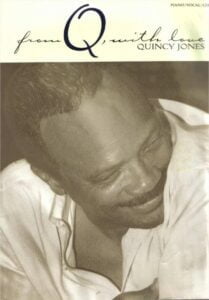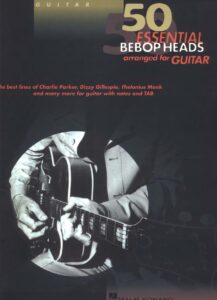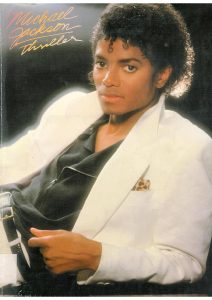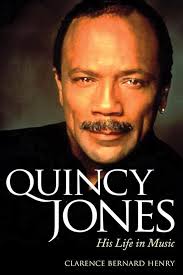Table of Contents
Come join us now, and enjoy playing your beloved music and browse through great scores of every level and styles!
Can’t find the songbook you’re looking for? Please, email us at: sheetmusiclibrarypdf@gmail.com We’d like to help you!
Quincy Jones dies at 91.
Quincy Jones died this Sunday at the age of 91 at his home in Bel Air (Los Angeles) surrounded by his family. His figure is undoubtedly one of the most influential in the history of contemporary music, with important weight in various genres and fields. His work not only resonates in genres such as jazz, soul, and pop, but also in areas such as musical production, changing the way of understanding the role of the producer as a sound architect.
Please, subscribe to our Library.
If you are already a subscriber, please, check our NEW SCORES’ page every month for new sheet music. THANK YOU!
Quincy Delight Jones, Jr. began his career as a trumpeter and arranger in the 1950s, during which time he worked with jazz greats such as Count Basie and Dizzy Gillespie. His ability for orchestral arrangements allowed him to experiment combining jazz with African-American rhythms and elements of classical music, which not only earned him recognition in his time, but also paved the way for him in musical production and direction. It was at this stage where he befriended iconic figures such as Ray Charles, Miles Davis and Billie Holiday , and in 1956 he undertook a tour as trumpeter for the aforementioned Dizzy Gillespie.

He lived in Paris, where he studied composition with the renowned Nadia Boulanger and Olivier Messiaen . In the French capital, he collaborated with renowned figures such as Leonard Bernstein and worked at Barclay Records, establishing himself as musical director and arranger. In 1961, back in New York, he was named vice president of Mercury Records, becoming one of the first African Americans to hold a senior position in the industry. His success as a producer included collaborations with artists such as Peggy Lee and Sarah Vaughan , and in 1963 he won his first Grammy for the arrangements of “I Can’t Stop Loving You” by the Count Basie Orchestra.

Best Sheet Music download from our Library.
His greatest period of popularity was during the 1980s, when he consolidated his influence as a producer, especially with Thriller Michael Jackson ‘s album . This album, the best-selling of all time, is considered a masterpiece of modern production, and its success would not have been possible without the sensitivity and creativity of Jones, whose approach elevated the role of the producer to a category of integral creator, responsible for both the sound and the musical identity of the artist himself.

In addition to his role in producing iconic albums like this one, Jones was also a pioneer in the integration of African-American music into the mainstream, promoting inclusivity and openness to artists of color in an industry historically dominated by whites. His leadership in this regard was crucial to genres like soul and funk gaining visibility and respect, and paved the way for future generations of artists of color. Likewise, his work as executive producer and mentor has been essential for the development of emerging talents, helping artists such as Lionel Richie, Patti Austin and Will Smith consolidate their careers.
Jones also stood out in film and television, composing soundtracks for films such as In Cold Blood, The Getaway and The Color Purple . On television, his themes for series such as Ironside and The Cosby Show became popular.
Rest in power, Quincy Jones.

Quincy Jones: The Birth of a Band!
Musician: Quincy Jones.
Accompanists: Al Cohn, Melba Liston, Nat Pierce and Quincy Jones (arrangements); Milton Hinton (b); Sam Woodyard (dm); Patricia Anne Bown (p); Benny Golson, Frank Wess, Phil Woods, Sahib Shihab and Zoot Sims (saxes); Jimmy Cleveland, Melba Liston, Quentin Jackson and Urbie Green (trombones); Clark Terry, Ernie Royal, Joe Newman and Quincy Jones (trumpets).
Recording Date: 1959. June 16.
Recording Location: New York.
Record Label: Fontana.
The Big Band led by Quincy Jones in 1959 was probably the best of his entire career. With its fabulous arrangements, and also using the support and experience of other enormous arrangers such as Al Cohn or Nat Pierce, Quincy, before leaving for Europe on tour, brings together a good handful of creative soloists, virtuoso instrumentalists who achieved, in this November 1959 recording session, memorable moments of his career.
In one of his best jazz recordings, Jones’ arrangements feature top musicians such as: Milton Hinton on bass, Sam Woodyard, on drums, Patricia Anne Bown on piano, and saxophonists: Benny Golson, Frank Wess, Phil Woods, Sahib Shihab and Zoot Sims. Tremendously modern music, spectacular arrangements and a careful repertoire of ten songs, where, above the excellent general tone of the session, the wonderful compositions of Benny Golson stand out: “Whisper Not”, and “I ‘Remember Clifford”.
The Birth Of A Band
Quincy Jones – The Birth Of A Band (Playlist)
Personnel
Quincy Jones – arranger, conductor
Harry Edison – trumpet
Joe Newman – trumpet
Ernie Royal – trumpet
Clark Terry – trumpet
Joe Wilder – trumpet
Billy Byers – trombone
Jimmy Cleveland – trombone
Urbie Green – trombone
Melba Liston – trombone
Tom Mitchell – trombone
Julius Watkins – French horn
Jerome Richardson – flute, alto saxophone, tenor saxophone, piccolo
Frank Wess – alto saxophone, flute
Phil Woods – alto saxophone
Benny Golson – tenor saxophone
Budd Johnson – tenor saxophone
Zoot Sims – tenor saxophone
Sam Taylor – tenor saxophone
Danny Bank – baritone saxophone
Sahib Shihab – baritone saxophone
Patti Bown – piano
Moe Wechsler – piano
Kenny Burrell– guitar
Les Spann – guitar
Milt Hinton – bass
Jimmy Crawford - drums
Osie Johnson – drums
Don Lamond – drums
Sam Woodyard – drumsTrack listing
"The Birth of a Band" (Quincy Jones) – 2:53
"Moanin'" (Bobby Timmons) – 3:02
"I Remember Clifford" (Benny Golson) – 3:42
"Along Came Betty" (Golson) – 3:21
"Tickle Toe" (Lester Young) – 2:55
"Happy Faces" (Sonny Stitt) – 2:40
"Whisper Not" (Golson) – 3:22
"The Gypsy" (Billy Reid) – 4:05
"A Change of Pace" (Harry Arnold, Quincy Jones) – 3:20
"Tuxedo Junction" (Erskine Hawkins, Bill Johnson, Julian Dash, Buddy Feyne) – 2:44Browse in the Library:
Or browse in the categories menus & download the Library Catalog PDF:
